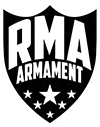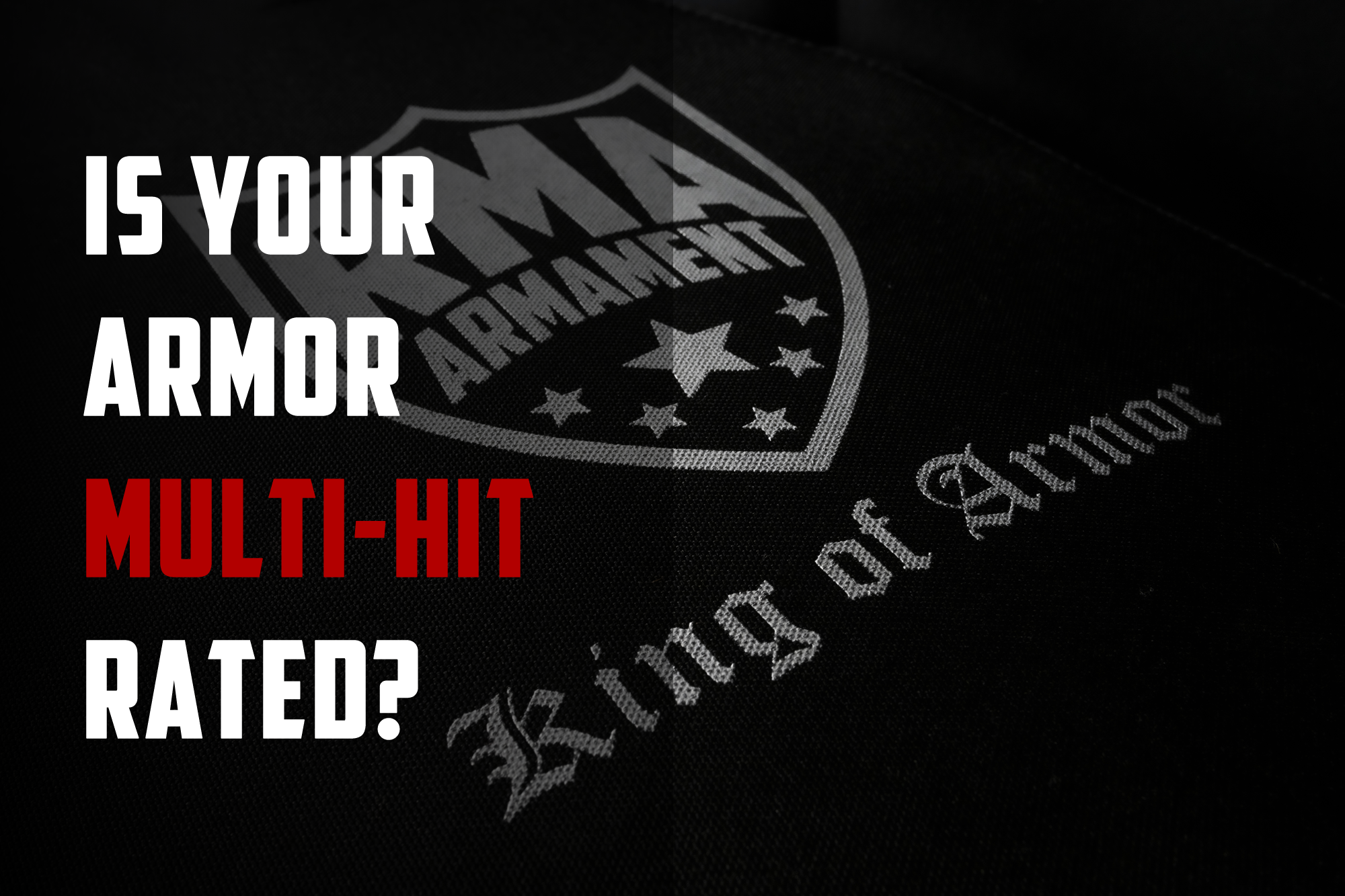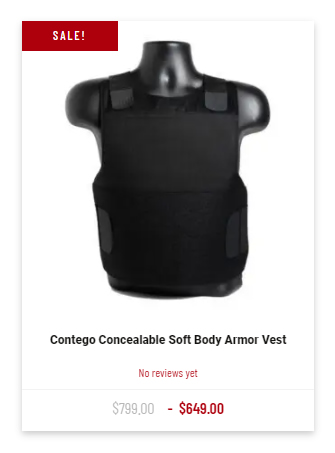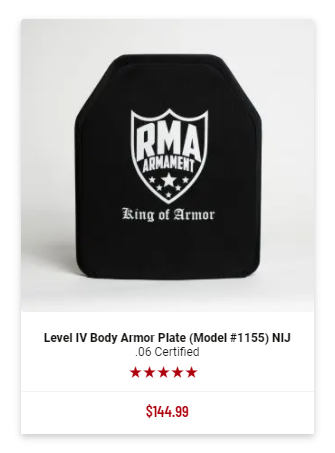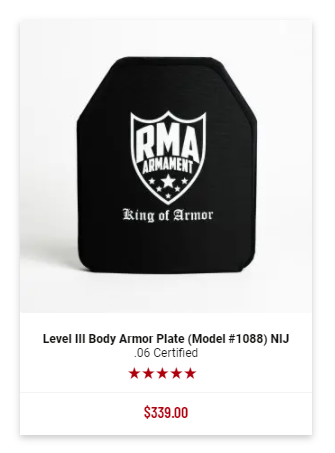What Does Multi-Hit Rated Mean?
Body armor that is multi-hit rated is guaranteed by the NIJ, the manufacturer, or both to defeat 2 or more rounds. But the total number of rounds that any single piece of body armor might defeat comes down to a variety of factors.
A System of Tradeoffs
Selecting body armor for wear should be mission dependent. There is no best body armor that will do everything you want all the time. Level II and IIIA soft armor is unbelievably impressive at defeating huge numbers of handgun rounds, but virtually all rifle rounds will sail right through it. Level III armor must be rated for 6 hits of M80 7.62 rounds, but it won’t defeat armor-piercing ammunition. In most cases, it won’t defeat mild steel core ammunition like M855 or M855A1. In order to defeat armor-piercing ammunition, we need to up our game with materials.
Body Armor Material Hardness
If you’re a fan of the show Forged in Fire like we are, you’ll recall that many knife makers utilize a Japanese style of blade design called San Mai. This design utilizes a hardened steel on its cutting edge for utility, but a much softer steel ‘wrap’ for the spine of the blade for durability.
If blade makers are unsuccessful at forge welding these two metals together, the hardened steel is much more prone to cracking. As materials get harder, they tend to be more brittle. The softer steel is more flexible and allows energy dispersal away from the harder steel areas when they torture test their blades by chopping hard materials like ice blocks.
Ceramics
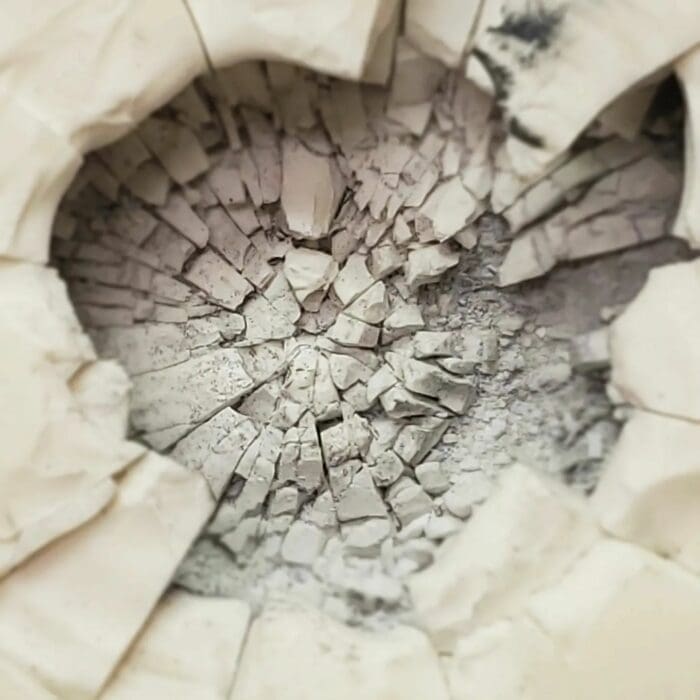 Most ceramics utilized in body armor construction are like high carbon steel in the San Mai blade cutting edge. They are extremely hard, which is necessary to stop high-speed hardened-steel projectiles like M2AP 30-06. However, the molecular bonds that make these materials incredibly strong also make them brittle. Ceramic body armor is often colloquially called, “dinner plates.” In a certain sense, this is a fairly accurate depiction. Your ceramic dinner plates that last for decades of daily use with steel utensils, high temperature cleaning, and loads of cleaning chemicals are extremely durable. However, they will also readily shatter if you drop them on your kitchen floor.
Most ceramics utilized in body armor construction are like high carbon steel in the San Mai blade cutting edge. They are extremely hard, which is necessary to stop high-speed hardened-steel projectiles like M2AP 30-06. However, the molecular bonds that make these materials incredibly strong also make them brittle. Ceramic body armor is often colloquially called, “dinner plates.” In a certain sense, this is a fairly accurate depiction. Your ceramic dinner plates that last for decades of daily use with steel utensils, high temperature cleaning, and loads of cleaning chemicals are extremely durable. However, they will also readily shatter if you drop them on your kitchen floor.
Body armor ceramics are a specialized version of the ceramics we know and love. These materials are designed with high strength in mind in order to defeat bullets, which your dinner plate won’t do. But like dinner plates, it’s possible to shatter ceramic body armor by impacting it. When high energy projectiles impact ceramics, the energy is absorbed through the breaking of the molecular bonds of the armor material with some dispersion through the plate. Where there is still enough energy from the round traveling through the material, cracks will form. This is precisely the function of the armor that prevents this energy from being transferred to your body when you’re wearing armor.
Build Quality
The molecular purity of the material can make all the difference in whether a round impact has more of its energy absorbed laterally across the strike face, or it passes through the strike face and creates more back face deformation or penetration. To that end, many government contracts stipulate things like X-Ray inspections to ensure there are no foreign materials or sloppy manufacturing when purchasing armor plates. Failures on these types of tests are often the cause of certain recalls and contract cancellations since flaws in the purity and makeup of the materials could be the difference between life and death for an operator that is depending upon the reliability and performance of their armor.
NIJ FIT Testing
The NIJ also conducts what are called, ‘FIT’ tests. When a body armor product is NIJ certified, NIJ representatives will visit the production line from time to time and test a number of randomly-selected plates against their rated standard to ensure continuing product compliance. Failing a FIT test is a very quick way to find your armor products in a boatload of trouble. FIT test failures have resulted in mass ‘recall and replace’ operations, even in contracts for SOCOM.
Because operators and consumers alike are always chasing thin-and-light proportions in their body armor, many companies are riding a knife’s edge in creating ultra-light options that are built to minimally pass laboratory testing standards, not necessarily to perform in a field environment. RMA overbuilds all of our body armor solutions to outperform the competition not just in a laboratory, but also in combat. Because of this overbuilt quality, all of RMA Armament’s body armor products are multi-hit rated and we have never failed a FIT test.
Soft Armor
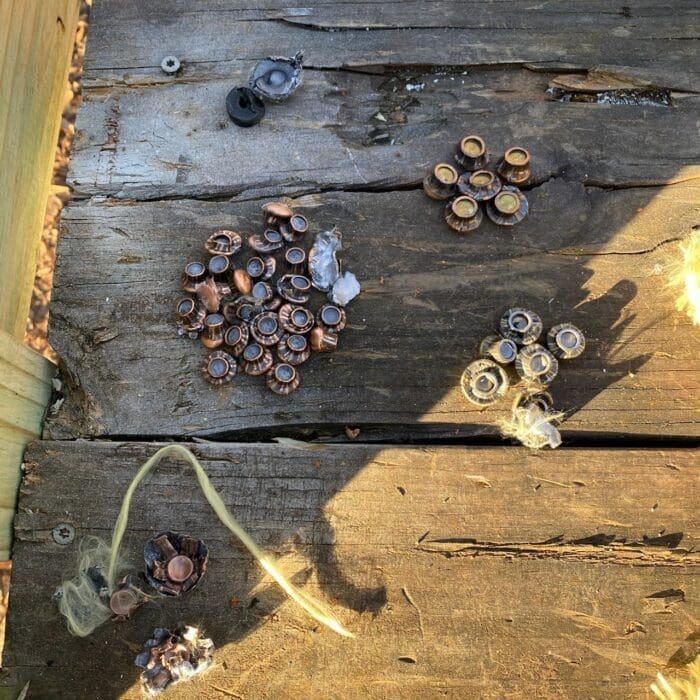 Modern soft armor level II and IIIA vests are notoriously great at defeating a huge number of handgun rounds. The RMA Contego vest was recently tested by Iraqveteran8888 against 9mm, 10mm, .45 ACP, and 12 Gauge 1 oz shotgun slugs, all of which were defeated by a single vest panel.
Modern soft armor level II and IIIA vests are notoriously great at defeating a huge number of handgun rounds. The RMA Contego vest was recently tested by Iraqveteran8888 against 9mm, 10mm, .45 ACP, and 12 Gauge 1 oz shotgun slugs, all of which were defeated by a single vest panel.
Soft armor is built by stacking multiple layers of ultra-strong ballistic fabrics thick enough to disperse and absorb the impact of a bullet. Because soft materials like Kevlar, Dyneema, and other ballistic fabrics are soft and flexible instead of brittle, energy from a bullet impact can be rippled or slipped laterally along the material in a non-destructive way. That means that a far smaller amount of molecular bonds are destroyed in the ballistic material upon impact, and the strike damage won’t ‘travel’ nearly as far.
Because of this relatively small area of damage to the ballistic material, high quality modern vests can defeat up to 50 rounds of handgun ammunition with relative ease—maybe even more depending upon shot placement and round construction.
Is Rifle-Rated Body Armor Multi-Hit Rated?
In some cases, yes. In many cases, absolutely not. The term ‘multi-hit rated’ describes at a minimum the ability of a single piece of body armor to defeat two or more impacts in some way. How much further you can go beyond that depends entirely on how the plate is made, what it is made of, how fast the bullet is traveling, and what the bullet is made of.
Level III
The NIJ standard for Level III certification of body armor consists of a battery of environmental tests (drop, water, heat, cold, etc.) and then the product’s ability to defeat (6) M80 7.62X51 rounds, more commonly (and approximately) called .308. Since most manufacturers have moved to UHMWPE material in level III plates, they are extremely light and many even float in water.
Technically, any NIJ Level III certified plate is multi-hit rated. However, most level III plates have a tough time stopping rounds like M855 green tip 5.56 that has a mild steel core in the bullet. Even soft steel is substantially harder than lead and has a much easier time penetrating barriers than many full lead construction rounds.
As a result, many level III plates demonstrate impressive performance on Youtube when end users test them by shooting them numerous times with intermediate rifle cartridges. Thanks to their 100% soft armor construction, even rifle rounds have a difficult time destroying enough of the molecular bonds in the material to destroy the ballistic efficacy of the plate. Just like handgun rounds, this fabric works extremely well on many rifle rounds.
But this soft, lightweight, flexibility comes at a price. Armor-piercing ammunition like M2AP and others require materials like ceramics to defeat them. Even AR500 and similar hardened steel cannot be layered and hardened enough to stop true armor-piercing ammunition while being worn on the human body, which is why you can’t buy it. Far stronger materials are required to defeat beryllium copper, hardened steel, and other true armor-piercing rounds.
Level IV
NIJ level IV certification means that the level IV body armor plate in your hand will reliably defeat a single M2AP 30-06 impact. It means absolutely nothing else. Presumably, it should also defeat a single round of lower-tier threats as well. But as we discussed above, what else your armor will do depends upon its materials, manufacturing, and the threat you expect it to defeat.
The NIJ does not certify multi-hit capability in level IV armor under 0101.06 specifications. What this means is that more often than not, cheap level IV armor (often made in China) will not perform when impacted with a second M2AP 30-06 rifle strike nearly anywhere across the strike face.
What multi-hit rated means in level IV is not the same as level III. Since level IV requires much harder and a more brittle material (the ceramic strike face), it is much more prone to a random distribution of compromising breakage than UHMWPE level III plates. Since the breakage is random, the only surefire way to reliably test multi-hit rating is to separate the first and second impacts to the greatest degree possible. Real-world situations don’t offer this luxury, and so end users must understand that multi-hit rating in level 4 armor is dependent upon a number of factors in order to extract the maximum performance from their armor.
Since this is the case, build quality is a critical part of determining how your level IV armor will perform. Multi-hit rating in level III is a given if your plate is NIJ certified. Multi-hit performance in level IV can mean a lot of different things since it’s simply not a part of the level IV NIJ testing.
If multi-hit performance is extremely important to you, you simply cannot do any better than the RMA Armament 1189 plate, the strongest body armor in the world. Our 1189 plate will reliably withstand 6 hits from armor piercing rifle rounds thanks to its patented ceramic pattern array which controls the expansion of the damage from a bullet strike by directing it to certain areas of the strike face. This helps promote not just lateral energy transfer instead of penetration, but also a more limited damage profile per strike that preserve more strike face than a normal level IV ceramic plate.
Conclusion
If you’re wearing RMA Armament plates, you’re wearing multi-hit rated top quality American-made armor. If not, we can’t say for sure unless it’s specifically rated by NIJ to do so. But be aware that what multi-hit rated actually means may vary depending on a lot of external factors that you might not be able to control.
